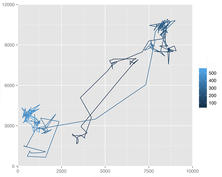Publication trimestrielle du Laboratoire
d'analyse et d'architecture des systèmes du CNRS
Future antenna architectures especially for space applications are becoming more and morecomplex due to the need of reconfigurability in terms of frequency, radiated and received power,power consumption and reliability. In this context, reflectarrays and frequency selective surfaces(FSSs) are particularly the hottest domains of RF design. The accurate analysis of electromagnetic(EM) scattering from such type of complex finite-sized reflectarray antenna structures is of greatpractical interest. But due to their large electrical size and complex cellular patterns specially whentuning elements such as RF-MEMS are also integrated within the array elements, conventional fullwaveEM analysis of such multiscale structures either fail or require enormous amount ofcomputational resources to resolve prohibitively large number of unknowns. Moreover thecharacterization of large array structures would normally require a second step for optimization andfine-tuning of several design parameters as the initial design procedure assumes severalapproximations. Therefore a full-wave analysis of the initial design of complete structure isnecessary prior to fabrication to ensure that the performance conforms to the design requirements. Amodular analysis technique which is capable of incorporating geometrical changes at individual celllevelwithout the need to rerun the entire simulation is extremely desirable at this stage.An indigenous technique called Scale Changing Technique (SCT) addresses this problem bypartitioning the cellular reflectarray geometry in numerous nested domains and sub-domains definedat different scale-levels in the array plane. Multi-modal networks, called Scale-changing Networks(SCNs), are then computed to model the electromagnetic interaction between any two successivepartitions by method of moments (MoM) based integral equation technique. The cascade of thesenetworks allows the computation of the equivalent surface impedance matrix of the complete arraywhich in turn is utilized to compute far-field scattering patterns. Full-wave analysis of both passiveand active (electronically tunable by RF-MEMS) reflectarrays has successfully been performed bythe SCT while utilizing very small amount of computational resources as compared to conventionalfull wave methods. Moreover, to speed up the SCT modeling of the reflectarrays, equivalentelectrical circuit models have been extracted and applied for the design and optimization of thereflectarray phase shifter elements.





